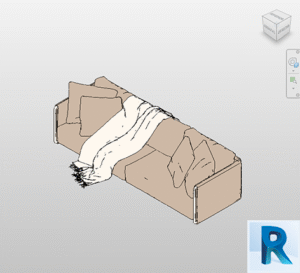The construction industry is evolving, and organizations like buildingSMART are at the forefront of this change. This nonprofit entity promotes smart construction through open standards for Building Information Modeling (BIM). By developing these standards, buildingSMART ensures that architects, engineers, contractors, and software providers can collaborate seamlessly, regardless of the tools they use. This level of interoperability is crucial for reducing project complexity and improving efficiency across the board.
What is buildingSMART?

buildingSMART was founded with the mission of improving the construction industry by promoting open BIM standards. This global initiative gathers key players from the industry, including architects, developers, software providers, and project managers, to create a common language for the digital exchange of information. The goal? To enable smoother collaboration, reduce errors, and shorten project timelines through the use of universal standards.
At the heart of buildingSMART’s work is the development of the Industry Foundation Classes (IFC). These classes provide a data exchange format that allows seamless communication between different BIM tools, eliminating the risk of information loss or distortion during project handovers.
History and Goals of buildingSMART
The roots of buildingSMART go back to 2005, when a coalition of construction companies and organizations came together to address the growing problem of interoperability in BIM. At that time, the lack of a common standard made it difficult for project teams using different software to share data, leading to miscommunication, delays, and rising costs.
In 2006, buildingSMART was officially established to create open, neutral standards for BIM. The organization’s name reflects the vision of making construction smarter through collaborative, data-driven practices. Since its inception, buildingSMART has focused on improving interoperability, reducing project durations, cutting costs, and enhancing the overall quality of buildings.
Open BIM and Its Role in Smart Construction

Open BIM is a collaborative approach to the design, construction, and operation of buildings, based on open standards and workflows. It enables project participants to work together effectively, regardless of the specific software tools they use.
The importance of Open BIM lies in its ability to lower project costs and timelines while enhancing construction quality. By fostering open standards and promoting collaboration, buildingSMART strives to create more efficient construction processes that benefit all stakeholders.
Benefits of Using buildingSMART for Construction
Implementing buildingSMART’s open BIM standards delivers numerous advantages. The most obvious is the increased efficiency in construction processes, with reduced errors, improved communication among team members, and a higher final product quality. By encouraging collaboration, buildingSMART helps prevent misunderstandings that can lead to costly mistakes.
Another key benefit is cost reduction. With open BIM, design and construction teams can collaborate in real-time, leading to fewer revisions and reworks. This not only speeds up project timelines but also lowers overall costs. buildingSMART’s standards ensure that teams work from the same digital framework, which streamlines planning, design, and execution phases.
How buildingSMART Operates: Standards and Technologies
The backbone of buildingSMART’s success lies in its development of open and neutral standards for BIM. The IFC standard serves as a universal language that allows different systems and software to communicate seamlessly. This ensures that project stakeholders, regardless of the tools they use, can collaborate effectively and exchange information without errors.
The IFC standard specifies how to represent objects and relationships within a construction project, making it easier to integrate data across multiple platforms. This standard is freely available, meaning any organization can adopt it without needing proprietary licenses.
In addition to IFC, buildingSMART continues to develop tools and technologies that support BIM implementation. This includes creating user-friendly interfaces, automating processes, and integrating with other systems. The organization provides resources and guidelines to help users adopt BIM standards effectively.
Collaboration in Smart Construction
Collaboration is the cornerstone of smart construction. In complex projects, the absence of proper coordination can lead to errors, delays, and inflated costs. buildingSMART tackles this issue by fostering interoperability and communication between different parties. The result is a more streamlined process, where architects, engineers, contractors, and project owners work in harmony.
Interdisciplinary coordination is essential in modern construction, where integrating various technologies and systems is the norm. For example, integrating automation, security, and communication systems within a project requires a high level of collaboration. buildingSMART’s standards ensure that all parties work together effectively, optimizing project outcomes.
Success Stories and Practical Applications
Case Study: Singapore Train Station
A prime example of Open BIM’s impact is the Singapore Train Station, designed by renowned architect Norman Foster. The project used software from different providers, allowing teams to coordinate their efforts efficiently. Open BIM reduced project costs and timelines by facilitating seamless communication between design and construction teams.
Case Study: University of California, San Francisco Hospital
Another successful case is the UCSF Hospital, where Open BIM played a crucial role in project coordination. With software from various vendors, teams were able to collaborate without hurdles, resulting in a faster and more cost-effective project delivery.
Practical Applications
Open BIM’s potential extends beyond individual projects. Its practical applications include:
- Building Design and Construction: Streamlining collaboration between designers and builders.
- Project Planning and Management: Enabling real-time updates and coordination between stakeholders.
- Building Maintenance: Allowing seamless transfer of data for ongoing operations and facility management.
- Urban Infrastructure: Assisting in the integration of large-scale systems for smart cities.
buildingSMART’s mission to promote open BIM standards is vital to the future of construction. By fostering collaboration and reducing inefficiencies, the organization is paving the way for smarter, more sustainable projects around the globe.
Free Revit families on Bimshares.com





